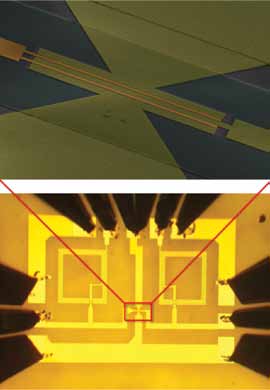Considering that there are several possible definitions and opinions for ‘nano’ that have been used of late, the confusion has prevailed. “Nanoscale is commonly defined as smaller than 100 nm and, by that definition, modern electronics have been at nanoscale for about a decade. This is the definition that Intel uses,” quips Michael Mayberry, director—components research, technology and manufacturing group, Intel.
A competing definition typically used for nanomaterials is to count both size and process for fabrication. Here some insist that making larger objects smaller doesn’t count and you should only count those using bottoms-up methods.
Clearing the air on the subject, Dr Denis Koltsov, consultant in Nanotechnology, BREC Solutions (UK), says, “Unfortunately, there is a lot of misunderstanding of the term ‘nano’ in whole of the nanotechnology community. The subgroups like nanoelectronics seem to deviate from an official ISO definition of nanotechnology if they are claiming that 45-22nm technology is still not nano electronics. Any device that is smaller than 100 nm in at least one dimension would be classed as nano-device. This also applies to thin-film devices like hard disks. While it is (understandably) difficult to call a big hard disk a nano electronics device, it is definitely not correct to reject a 22nm technology from nano-electronics community by definition. A much more appropriate definition for those that work with molecules and nano tubes would be molecular electronics or pico technology (1nm-0.1nm size). Please note that these are not ISO definitions.”

Dr James Canton, futurist, adviser, CEO, Institute for Global Futures www.FutureGuru.com, and author of the book Extreme Future, adds another perspective, “People think that nano science is about size, while it is more about capturing in small platform a dense amount of functionality and performance.” Also, nano is about changing the concept of synthetic consciousness in developing other forms of intelligences that can function at the quantum level.
How far is nano from going mainstream in electronics?
Going beyond the concept, let us now look at the way nanotechnology has evolved in the last one decade and the direction towards which it is heading.
If we look at the application side, it is believed that most of the nanoelectronics technologies (at the transistor level) demonstrated today—such as hybrid molecular/semiconductor electronics, one dimensional nanotubes/nano-wires and advanced molecular electronics—are futuristic and not usable anytime in the near future. As a general statement it is true. The industry has had its share of doubts about the wide scale adoption of nano-technology in electronics. Currently, in the mainstream we see 40nm and 28nm technologies, says Gerousis. Most of the work that is underway below the 20nm dimension is in the research and development phase.
The key challenge that is being faced by the industry and researchers is that while the nanomaterials are exotic, these are not easy to produce. Some of the exotic nanomaterials, including carbon nanotubes, have very interesting proper-ties as materials. But the industry still lacks the ability to precisely form and use them for electronics where we typically need to fabricate billions of transistors at once, opines Mayberry.
“The largest of the exotic material demonstrations have been of the order of a handful of devices working together. Nevertheless, considering the pace of science and technology advances, I think eight to ten years from now we might be using some of these exotic materials in electronics production. For applications requiring less precision some of these nanomaterials are already in use,” he adds.
Devices using carbon nanotubes or nanowire transistors show promise for specialised sensors, and there is also some perspective for nanowire solar cells. But molecular devices have only proven their relevance at the diode level, and a genuine single molecule transistor (three-terminal device) with acceptable characteristics is still out of reach.

“Nanoscale spin transistors are also interesting, but they exist only at the exploratory level. In any case, those devices still require huge break-throughs in many challenges such as reproducibility, dimensional control, positioning, contacts, doping and transport properties in general. At this time, none of these technologies has a proven advantage over CMOS,” Rossum avers.
But it is equally true that all nano-techniques, which are compatible with CMOS, are worth considering to over-come the bottlenecks related to lithography, such as power dissipation and leak-age, signal transmission speed and integrity, adds Rossum. “The goal is to push CMOS node scaling-down to 16 nm, 11 nm or even below. At 11 nm there will still be no need for CMOS alternatives. However, below that scale the situation is less clear. It has sometimes been stated that molecular or atomic devices would offer many attractive features, but the truth is that in conventional electronics the laws of quantum mechanics work against us once we reach the quantisation level,” he opines.






